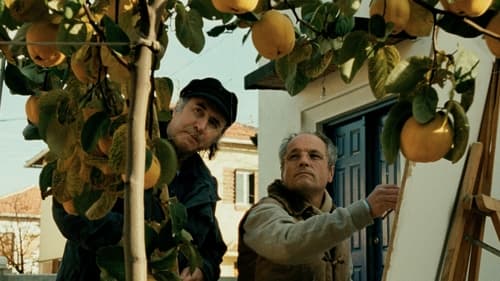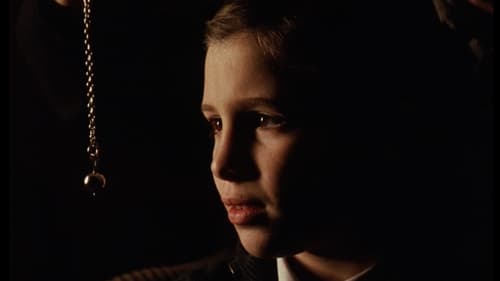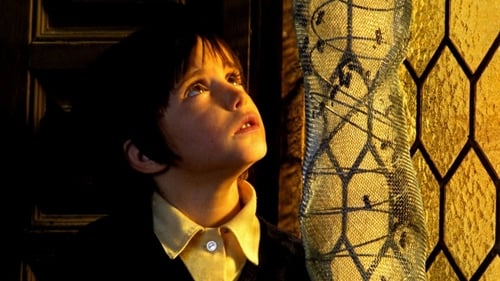
Víctor Erice
Nascimento : 1940-06-30, Carranza, Vizcaya, País Vasco, España
História
Víctor Erice Aras (Spanish: [ˈbiɣtoɾ eˈɾiθe]; born 30 June 1940; Karrantza) is a Spanish film director. He is best known for his two feature fiction films, The Spirit of the Beehive (1973), which many regard as one of the greatest Spanish films ever made, and El Sur (1983).
Erice was born in Karrantza, Biscay. He studied law, political science, and economics at the University of Madrid. He also attended the Escuela Oficial de Cinematografia in 1963 to study film direction.
He wrote film criticism and reviews for the Spanish film journal Nuestro Cine, and made a series of short films before making his first feature film, The Spirit of the Beehive (1973), a critical portrait of 1940s rural Spain. Erice was among other filmmakers, such as Luis Buñuel, who lived in “such restricted societies as Franco’s Spain,” to take aim at the authoritarian rule in power. At the time his first film was released in 1973, Francisco Franco was still in power. One of the things The Spirit of the Beehive is known for is its use of symbolism to portray what life was like in Spain under Franco’s rule. Setting the movie in 1940, at the start of Franco’s rule, was a risk for Erice, given that the film “wasn't a propagandist effort in which stalwart Francoists won victories against evil, priest-massacring Republicans.” Ten years later, Erice wrote and directed El Sur (1983), based on a story from Adelaida García Morales, another highly regarded film, although the producer Elías Querejeta only allowed him to film the first two-thirds of the story. His third movie, The Quince Tree Sun (1992) is a documentary about painter Antonio López García. The film won the Jury Prize and the FIPRESCI Prize at the 1992 Cannes Film Festival. In July 2022, thirty years after his last full-length film, a project for a new Erice film (Cerrar los ojos) supported by Pecado Films, Tándem Films, Nautilus as well as Canal Sur was revealed to be in development. The film premiered in the following year at the 2023 Cannes Film Festival and was met with very positive reviews.
He was a member of the jury at the 2010 Cannes Film Festival in May. At the 2014 Locarno Film Festival, Erice was awarded with a Golden Leopard award for lifetime achievement.

Director
Situated in front of the video camera, observed by it day and night, the stele-sculpture and chapel of the Memorial have been subjected to a cinematisation process in Stone and Sky in which light, sound and time play an essential role. The daytime view, dominated by the sun (Eguzki) from dawn to dusk, contrasts with the night-time view. The former offers images in which nature coexists with the footprints of history (the work of man: the stone circles, Oteiza’s decrepit stele, Vallet’s chapel); the latter tries to capture something of the metaphysical dimension of the scene lit by the Moon (Ilargi, that is, the light of the dead). In short, they are the elements of what Oteiza identified as the ‘Culture of the Sky’.

Himself
Six authorities of cinema describe their approach to transcendence, mysticism, spirituality and life after dead.

Screenplay
Four voices and their visions of Guimarães, cradle city of the Portuguese nation and European Capital of Culture in 2012.

Director
Four voices and their visions of Guimarães, cradle city of the Portuguese nation and European Capital of Culture in 2012.

Producer
Life through a glass, life through a lens, life through a camera. Fade to black. General view of the access to a factory with a big wheel.

Screenplay
Life through a glass, life through a lens, life through a camera. Fade to black. General view of the access to a factory with a big wheel.

Director
Life through a glass, life through a lens, life through a camera. Fade to black. General view of the access to a factory with a big wheel.

Director
Um tributo às vítimas do terremoto Sismo que atingiu o japão no dia onze de março de 2011, onde mais de quinze mil pessoas morreram. Cada diretor convidado elaborou um curta-metragem de três minutos e onze segundos para expressar seus sentimentos em relação a tragédia que abalou o país.

Himself
Dcoumentary about director/artist Nicholas Ray and his time as a University professor

Self
The Midnight Sun Film Festival is held every June in the Finnish village of Sodankylä beyond the arctic circle — where the sun never sets. Founded by Aki and Mika Kaurismäki along with Anssi Mänttäri and Peter von Bagh in 1985, the festival has played host to an international who’s who of directors and each day begins with a two-hour discussion. To mark the festival’s silver anniversary, festival director Peter von Bagh edited together highlights from these dialogues to create an epic four-part choral history of cinema drawn from the anecdotes, insights, and wisdom of his all-star cast: Coppola, Fuller, Forman, Chabrol, Corman, Demy, Kieslowski, Kiarostami, Varda, Oliveira, Erice, Rouch, Gilliam, Jancso — and 64 more. Ranging across innumerable topics (war, censorship, movie stars, formative influences, America, neorealism) these voices, many now passed away, engage in a personal dialogue across the years that’s by turns charming, profound, hilarious and moving.

Bergala makes Erice wander about (DV in hand) between Madrid and Paris remembering those primeval scenes in his education as a filmmaker, retrieving places more alive than ever in his cinéphile memory. Paris-Madrid, allers-retours fuses genealogy & elegy, diving into the roots of Erice’s oeuvre.

Director
Shortlength that recreates the letters exchanged between Victor Erice and Abbas Kiarostami.

himself
Relationships and multiple influences between two great directors of modern cinema.

Director of Photography
Relationships and multiple influences between two great directors of modern cinema.

Editor
Relationships and multiple influences between two great directors of modern cinema.

Writer
Relationships and multiple influences between two great directors of modern cinema.

Director
Relationships and multiple influences between two great directors of modern cinema.

Greek Theo Angelopoulos traveling from Athens to Ostia, the Roman beach where Pasolini was killed. Far from there, in a Spanish train station, Víctor Erice wanders in an interview about the film resistance. And in Italy, Tonino Guerra, Ninetto Davoli and Nico Naldini lend his voice to the missing Passolini to close a historic triangle on film and solitude.

Self - Narrator
O cineasta espanhol Víctor Erice fala sobre o primeiro filme que ele provavelmente viu, Garra Escarlate (1944) de Roy William Neill, estrelado por Basil Rathbone como Sherlock Holmes. As memórias de uma experiência cinematográfica tão formativa o levam a recordar os dias sombrios após o fim da Guerra Civil Espanhola, a confessar os muitos medos que assombram as crianças e a refletir sobre a natureza da própria memória.

Writer
O cineasta espanhol Víctor Erice fala sobre o primeiro filme que ele provavelmente viu, Garra Escarlate (1944) de Roy William Neill, estrelado por Basil Rathbone como Sherlock Holmes. As memórias de uma experiência cinematográfica tão formativa o levam a recordar os dias sombrios após o fim da Guerra Civil Espanhola, a confessar os muitos medos que assombram as crianças e a refletir sobre a natureza da própria memória.

Director
O cineasta espanhol Víctor Erice fala sobre o primeiro filme que ele provavelmente viu, Garra Escarlate (1944) de Roy William Neill, estrelado por Basil Rathbone como Sherlock Holmes. As memórias de uma experiência cinematográfica tão formativa o levam a recordar os dias sombrios após o fim da Guerra Civil Espanhola, a confessar os muitos medos que assombram as crianças e a refletir sobre a natureza da própria memória.

Director
In a school in Extremadura in a town called Arroyo de la Luz, the teacher shows children of about ten years the subtitled Kiarostami film "Where is my friend's house?" and makes them reflect on the moral dilemma about friendship and obedience posed by the film

Interviewee
A documentary made for Spanish television with an interview of film director Victor Erice concerning his 1983 film "El Sur."

Writer
Apuntes is a sort of prologue to ‘The Quince Tree Sun’. With images shot by Erice in the Summer of 1990, as he was preparing such film, observing how the painter Antonio López worked. Erice wrote and selected the texts which illustrate them. Apuntes is split in 6 parts to show López’s 6 projects.

Director
Apuntes is a sort of prologue to ‘The Quince Tree Sun’. With images shot by Erice in the Summer of 1990, as he was preparing such film, observing how the painter Antonio López worked. Erice wrote and selected the texts which illustrate them. Apuntes is split in 6 parts to show López’s 6 projects.

Screenplay
1940. In a rural home in northern Spain life goes on, slowly. But a blood stain on a newborn might have some deep meanings.

Director
1940. In a rural home in northern Spain life goes on, slowly. But a blood stain on a newborn might have some deep meanings.

Writer
Ten Minutes Older is a 2002 film project consisting of two compilation feature films entitled The Trumpet and The Cello. The project was conceived by the producer Nicolas McClintock as a reflection on the theme of time at the turn of the Millennium. Fifteen celebrated film-makers were invited to create their own vision of what time means in ten minutes of film.

Director
Ten Minutes Older is a 2002 film project consisting of two compilation feature films entitled The Trumpet and The Cello. The project was conceived by the producer Nicolas McClintock as a reflection on the theme of time at the turn of the Millennium. Fifteen celebrated film-makers were invited to create their own vision of what time means in ten minutes of film.

Interviewee
An interview with Spanish film director Victor Erice, conducted by Hideyuki Miyaoka

Self - Filmmaker
The story of the creation of The Spirit of the Beehive, a film directed by Víctor Erice in 1973.

Director
This film project was made in 1996 to commemorate the 100th anniversary of the birth of the cinema.

Writer
Sol do Marmelo é um filme sobre a determinação artística da vontade de representar um marmeleiro sobre o qual incide maravilhosamente a luz da manhã. E isso é a mesma coisa que filmar a confrontação daquela vontade com a fluência cósmica e irreparável do tempo, fazendo com que encare a variabilidade meteorológica e a efemeridade das formas orgânicas. Victor Erice oferece sua câmera à metódica, quase missionária, entrega de Antonio Lopez ao seu trabalho.

Director
Sol do Marmelo é um filme sobre a determinação artística da vontade de representar um marmeleiro sobre o qual incide maravilhosamente a luz da manhã. E isso é a mesma coisa que filmar a confrontação daquela vontade com a fluência cósmica e irreparável do tempo, fazendo com que encare a variabilidade meteorológica e a efemeridade das formas orgânicas. Victor Erice oferece sua câmera à metódica, quase missionária, entrega de Antonio Lopez ao seu trabalho.

Screenplay
Jovem que vive em uma pequena aldeia, no norte da Espanha, rememora, na sua maturidade, a infância, o relacionamento com o pai, os avós e a Guerra Civil Espanhola.

Director
Jovem que vive em uma pequena aldeia, no norte da Espanha, rememora, na sua maturidade, a infância, o relacionamento com o pai, os avós e a Guerra Civil Espanhola.

Director
As duas pequenas irmãs Ana e Isabel moram em terras rurais da Espanha, na década de 40. Elas estão determinadas a encontrar a estranha figura de "Frankenstein" que passará pela região.

Writer
Los desafíos presents three separate stories that are linked by an American presence in Spain in the 1960s, with Dean Selmier playing the role of the American male in all three.

Director
Los desafíos presents three separate stories that are linked by an American presence in Spain in the 1960s, with Dean Selmier playing the role of the American male in all three.

In Spain, Antoñito, a child, is punished to remain standing doing the fascist salute. As an adult, turned into a young college student, he tries to free himself from the perverse amalgam of ideas, values and beliefs with which his family, the Catholic Church and the repressive elements of the Franco Regime poisoned his mind during his childhood.

Assistant Director
Filmed in 1963, but not released in Spain until 1967, the film depicts the failed romance between a bourgeois french tourist girl and a spanish working class boy.

Writer
Filmed in 1963, but not released in Spain until 1967, the film depicts the failed romance between a bourgeois french tourist girl and a spanish working class boy.

Writer
Isabel returns to Spain, after several years of absence, to be cured of a neurosis. His daughter Ana, whom he has not seen in all this time, decides to spend the holidays with her, taking advantage of the fact that her boyfriend has gone to study in Germany. During her stay in the sanatorium, Ana meets Mario, an attractive young man somewhat unbalanced, who tries to seduce her. Although at first she does not show any interest, little by little she becomes attracted to him.

Director

Screenplay
A married woman living in France returns to Madrid to bury her father.

Director
A married woman living in France returns to Madrid to bury her father.

Director

Director
Short film made by Víctor Erice during his time at the Official School of Cinematography

Production Manager

Writer
While filming a movie, famous Spanish actor Julio Arenas disappears without a trace. Although his body is never found, the police conclude that he has suffered an accident at a cliff by the sea. Many years later, the mystery is brought up once more by a TV program, which offers previously unreleased images of the last scenes in which he participated, shot by his close friend, director Miguel Garay.

Director
While filming a movie, famous Spanish actor Julio Arenas disappears without a trace. Although his body is never found, the police conclude that he has suffered an accident at a cliff by the sea. Many years later, the mystery is brought up once more by a TV program, which offers previously unreleased images of the last scenes in which he participated, shot by his close friend, director Miguel Garay.

Director

Director







